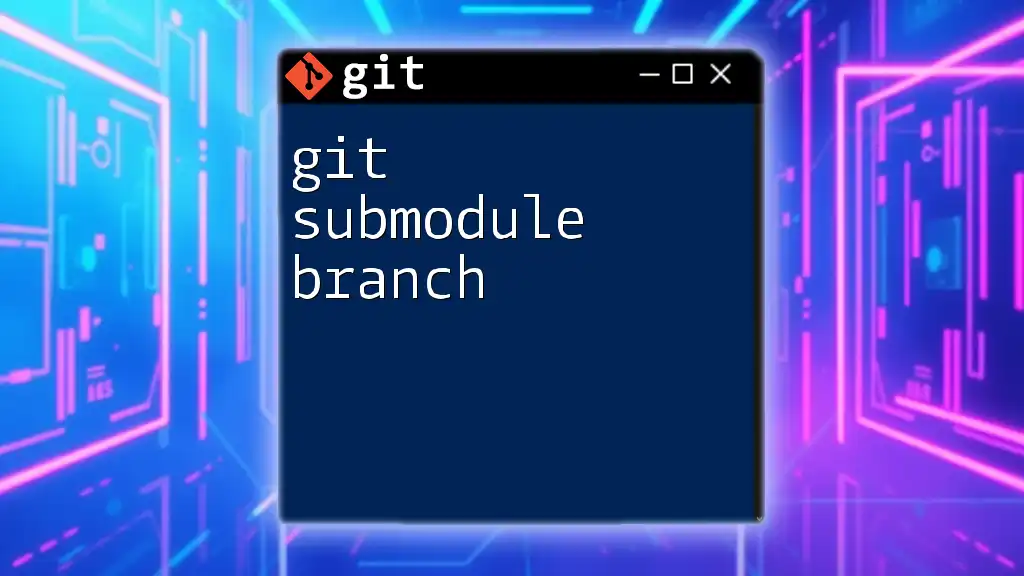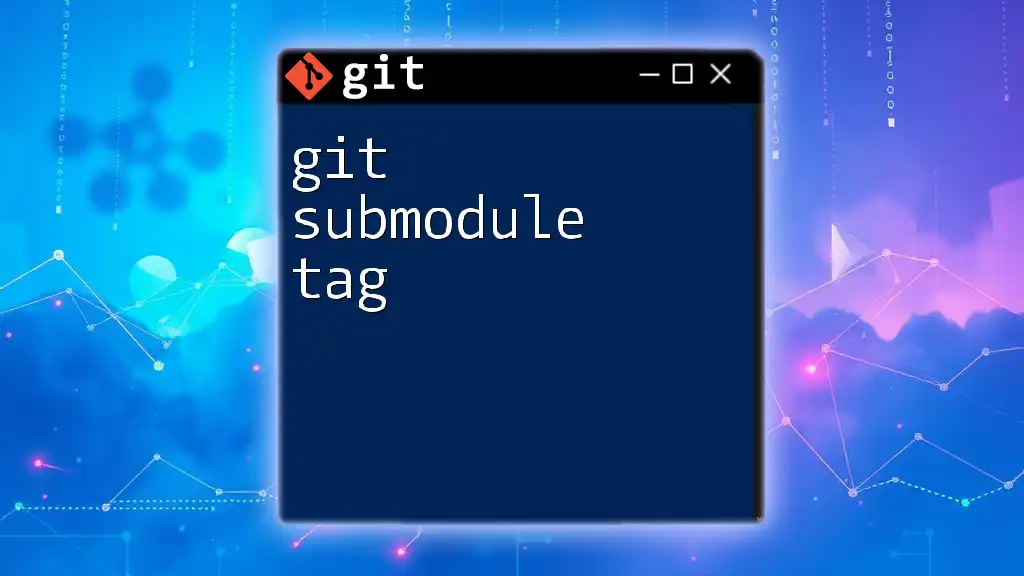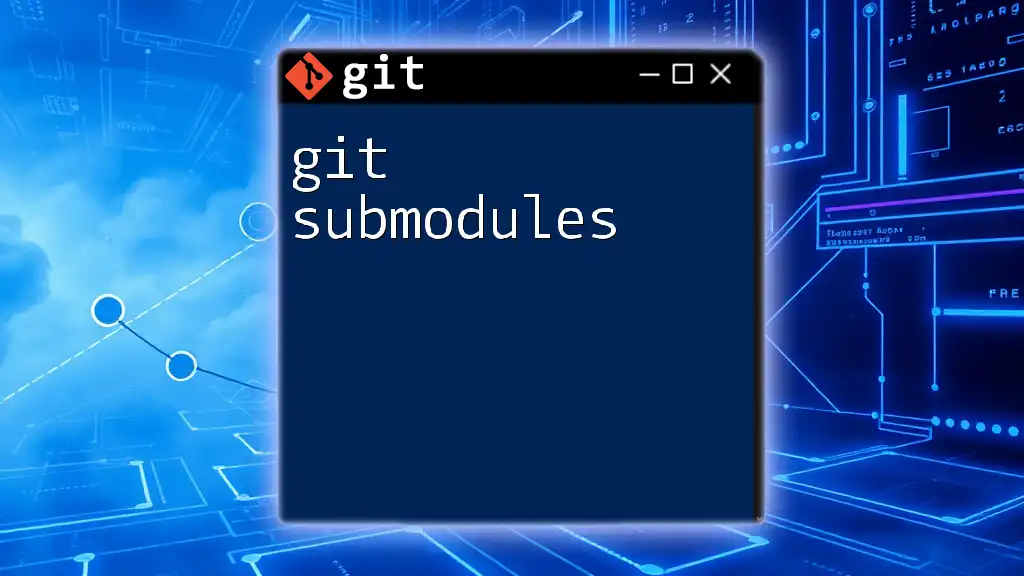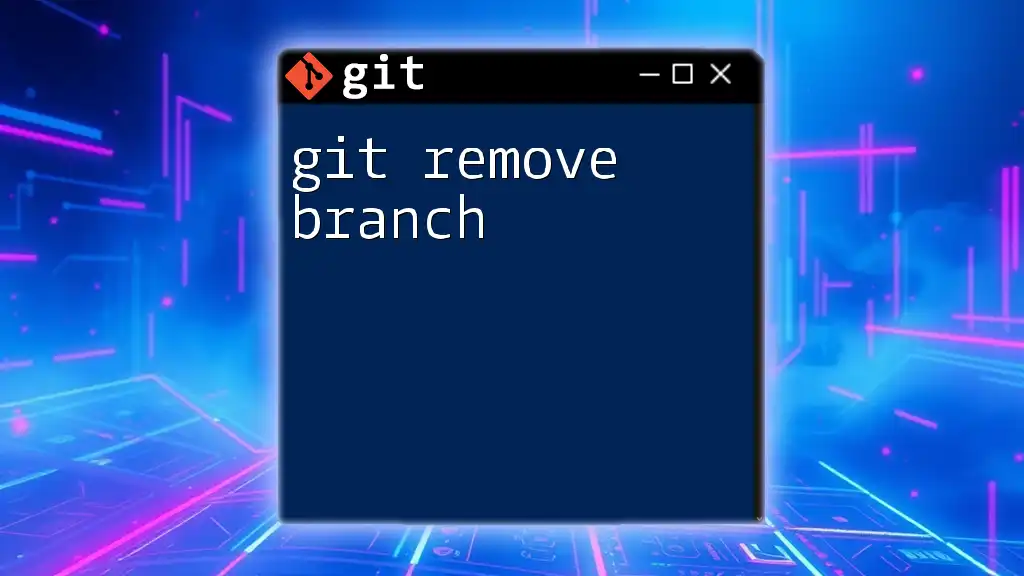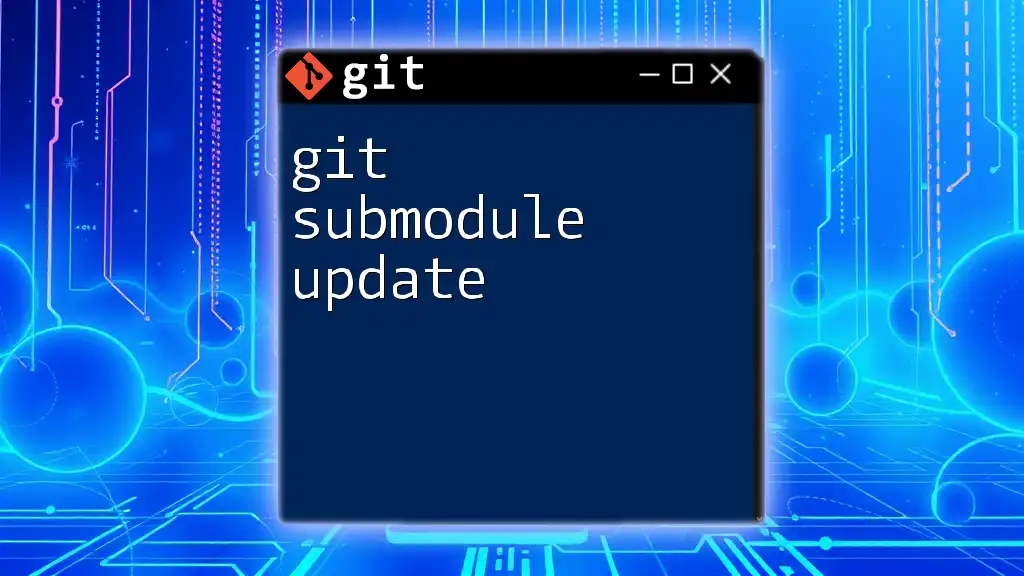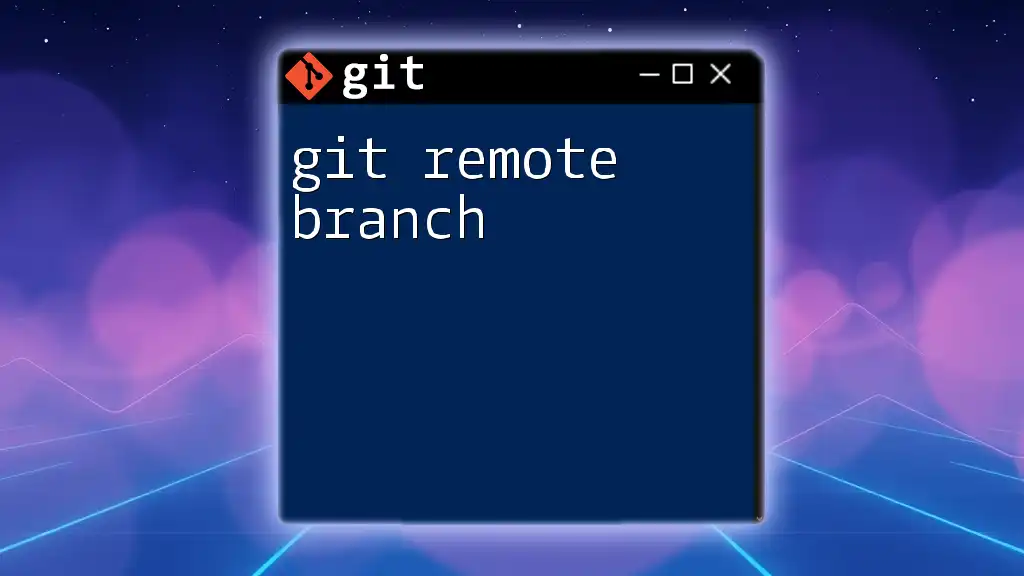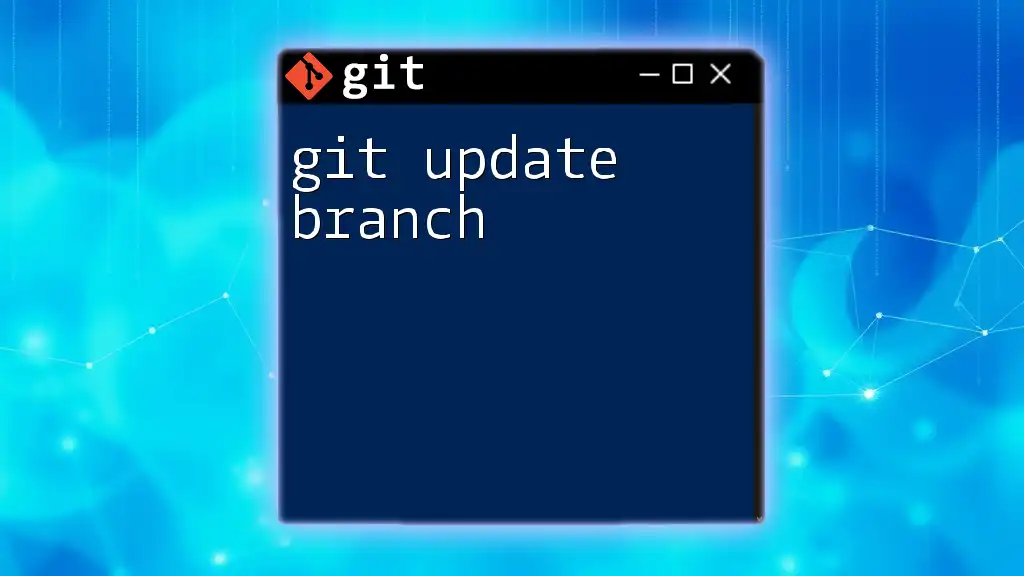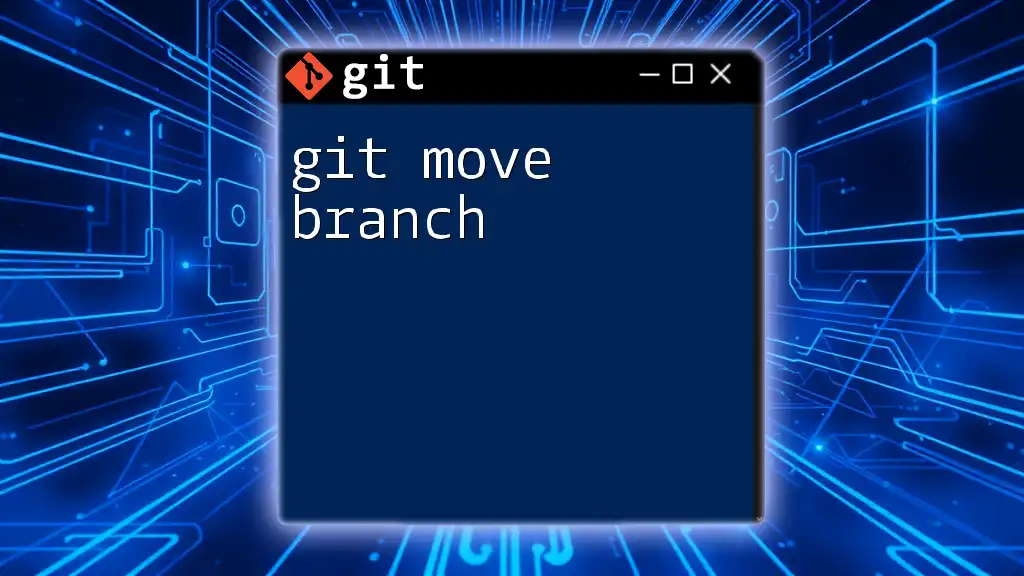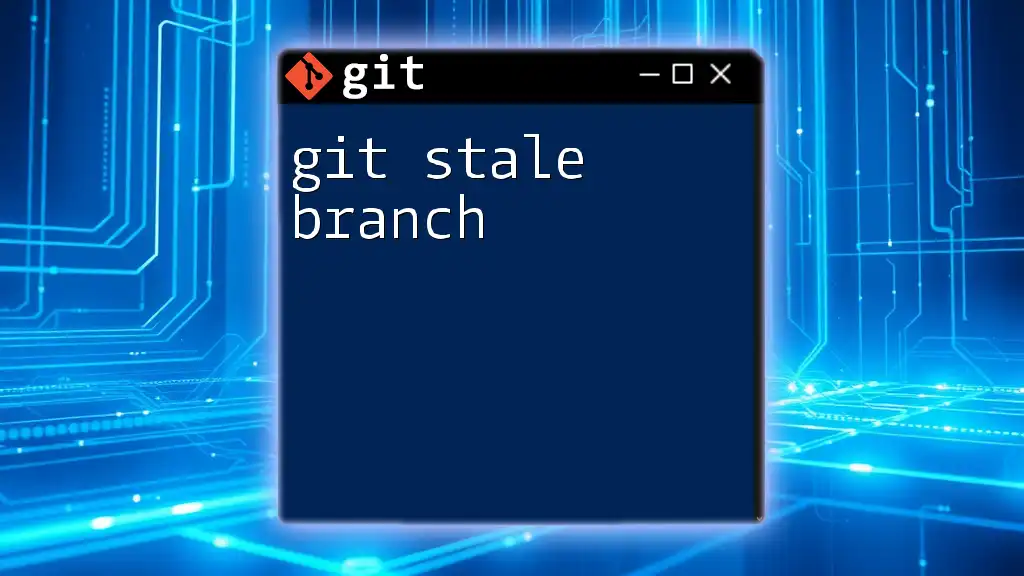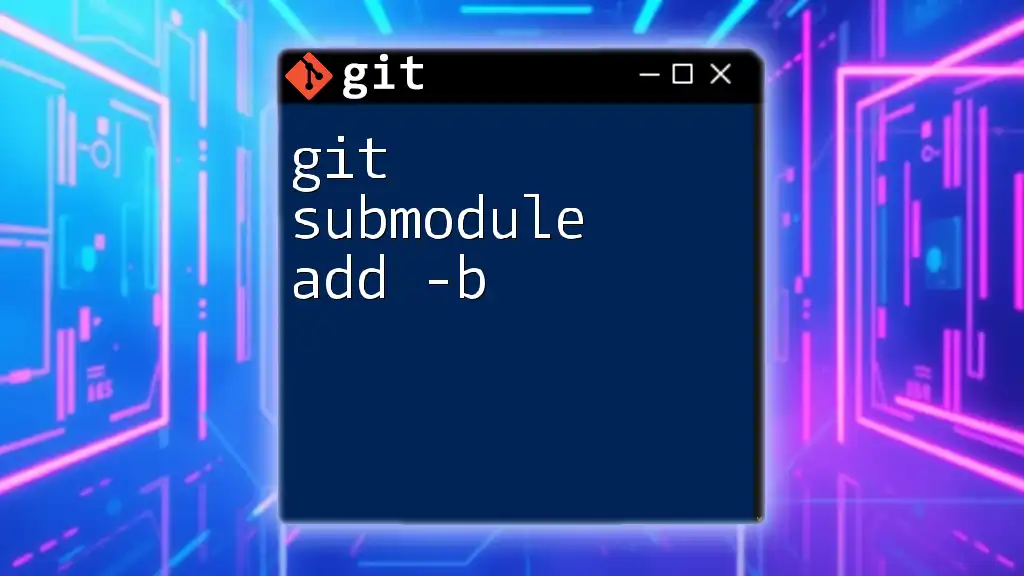A Git submodule branch allows you to manage dependencies by integrating a separate Git repository into your main project, enabling version tracking across multiple repositories.
Here's how to add a submodule and checkout a specific branch:
git submodule add -b <branch-name> <repository-url> <path>
What Are Git Submodules?
A submodule in Git is a repository embedded within another repository. This powerful feature allows developers to include and manage external repository content as part of their own project. Submodules maintain their own history and are referenced in a parent repository. By using submodules, developers can effectively manage vendor libraries, frameworks, or any external dependencies that need to be versioned independently.
The benefits of using submodules include:
- Modular Design: Enables the organization of complex applications into manageable components.
- Reusability: Code developed can be reused across different projects without duplication.

Managing Submodules in Git
To use submodules within Git, you first need to add them to your project. The command for adding a submodule is straightforward:
git submodule add <repository> <path>
This command clones the specified repository into the defined path within your project, setting it up as a submodule. After adding a submodule, you will need to initialize it. Here's how you do it:
git submodule init
git submodule update
The `init` command initializes your submodule configuration, while `update` pulls in the content from the submodule's repository.
It’s important to keep submodules updated as the parent repository evolves. You can update the submodule to track the latest changes in the remote repository using:
git submodule update --remote
This command fetches the latest commits from the submodule's default branch, ensuring you’re always working with the most current version.
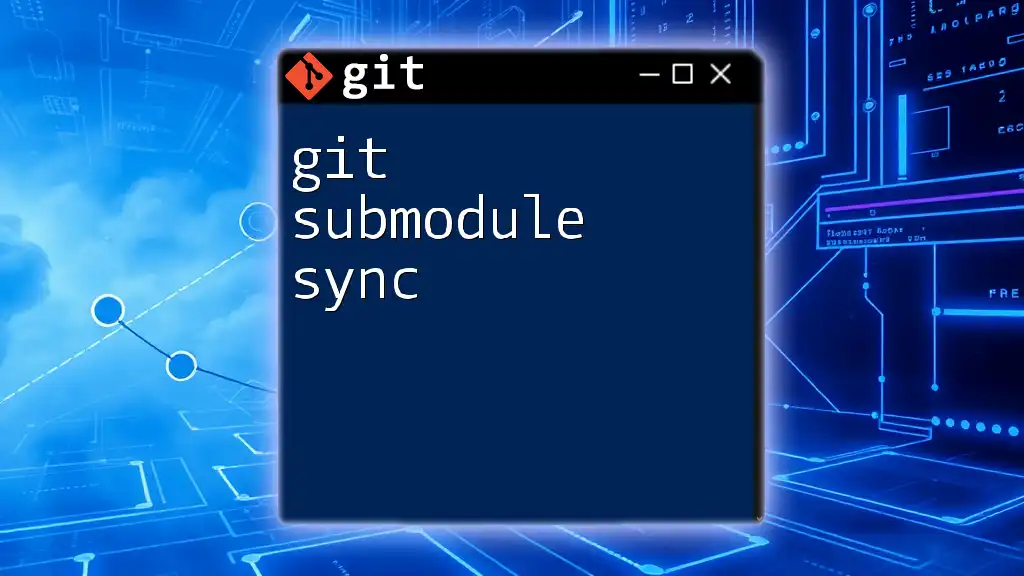
Understanding Branches in Git Submodules
In Git, a branch is a pointer to a specific commit, allowing developers to diverge from the main line of development and continue to work independently. Branches are essential for managing features, bug fixes, and experimentation without affecting the stable code base.
Using branches within submodules provides additional flexibility:
- Isolation of Changes: Each feature or bug fix can be developed on a separate branch within the submodule, minimizing the risk of introducing instability into the main project.
- Maintaining States: Different branches can represent various stages of development, like stable releases or in-progress feature branches.
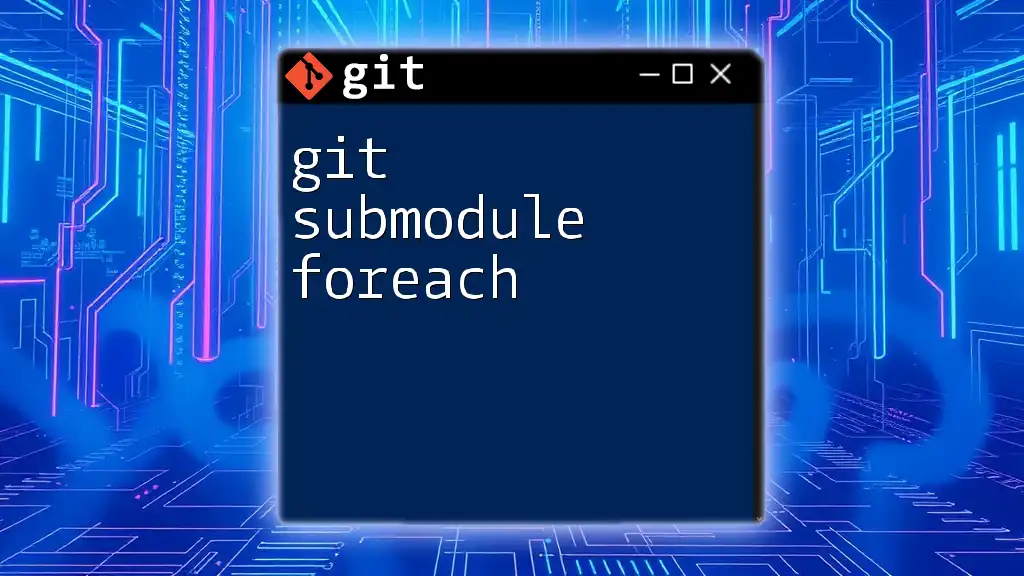
Working with Submodule Branches
To effectively utilize branches in your submodules, you occasionally need to check out a specific branch. After navigating into your submodule's directory, you can switch branches as follows:
cd <submodule>
git checkout <branch-name>
If you want to create a new branch in your submodule to implement a feature or fix, you can do so with:
git checkout -b <new-branch-name>
This command will create a new branch and switch you to that branch immediately, allowing you to start developing without interference from other branches.
Best Practices for Submodule Branch Management
Maintaining synchronization between the submodule and the parent repository is paramount. Regularly commit changes made in the submodule to ensure that they are reflected in the parent repository. Use the following commands to commit changes:
cd <submodule>
git add .
git commit -m "Your commit message"
After committing your changes, you should return to the parent repository and update its reference to the submodule:
cd <parent-repository>
git add <submodule>
git commit -m "Updated submodule to latest commit"
Documenting the branches you work on in your submodules is crucial. Clear comments and a well-maintained README within the submodule can be invaluable for future reference, ensuring that the intent behind changes is understood.
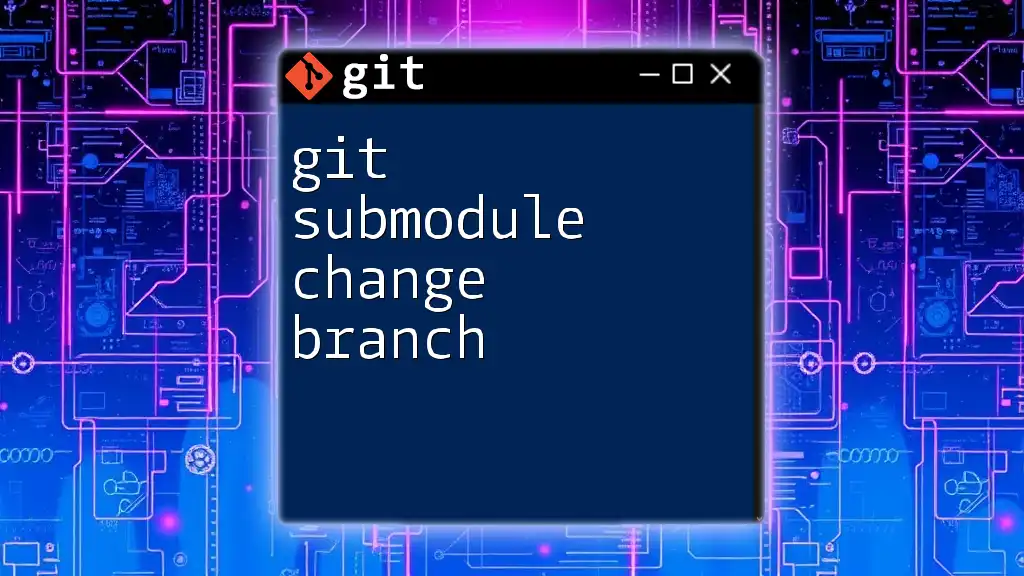
Common Issues with Submodule Branches
As you work with submodule branches, you may encounter merge conflicts. If two different branches in a submodule have changes to the same lines of a file, Git will notify you of a conflict that must be resolved. After resolving any conflicts, ensure that you stage and commit the changes both in the parent repository and in the submodule.
Keeping submodules updated is also a common hurdle. It's important to regularly run:
git submodule update --remote
This ensures that the submodules reflect the latest changes from their respective remote repositories. Regular updates help avoid discrepancies that can cause confusion or build issues later on.
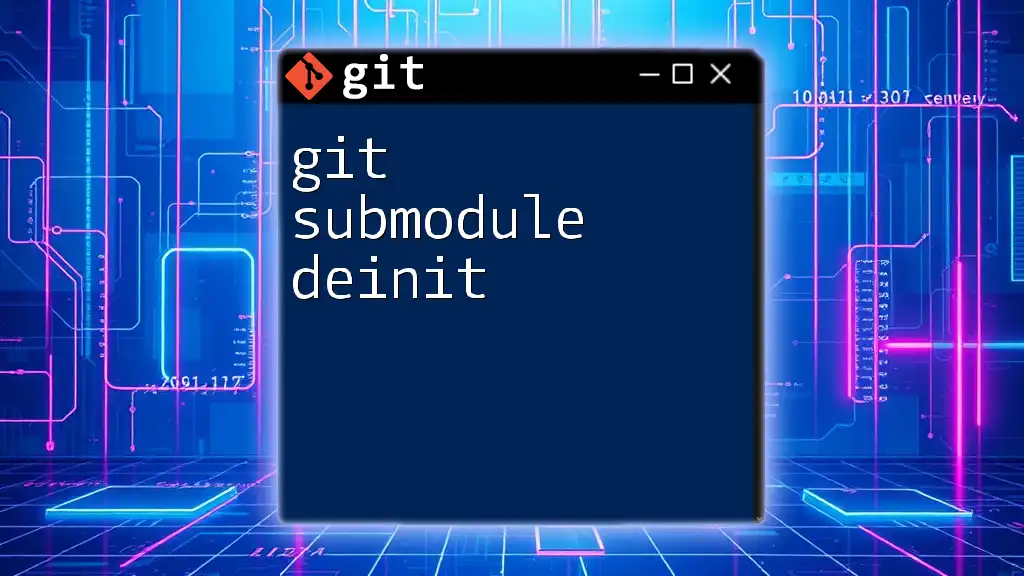
Conclusion
In summary, mastering git submodule branch management is essential for any developer working on multi-repository projects. This technique enhances code organization, promotes collaboration, and helps maintain a clean project structure. By understanding the intricacies of adding, initializing, and managing submodules and their branches, you will equip yourself with the tools necessary to become an efficient Git user.
Stay curious and practice these concepts in your own projects to develop confidence in managing Git submodules and their branches effectively.

